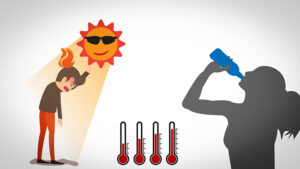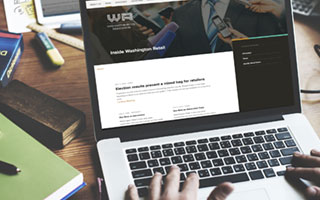 In June, the Department of Labor and Industries (L&I) issued emergency rules to protect workers from outdoor heat exposure when temperatures are elevated. L&I first adopted emergency rules in 2021, but due to pandemic-related scheduling challenges, L&I had not initiated permanent rulemaking.
In June, the Department of Labor and Industries (L&I) issued emergency rules to protect workers from outdoor heat exposure when temperatures are elevated. L&I first adopted emergency rules in 2021, but due to pandemic-related scheduling challenges, L&I had not initiated permanent rulemaking.
The 2022 emergency rule outlines many features contained in the 2021 emergency rule, including requirements for training and education, ensuring employers provide adequate water and shade at the worksite, and required 10-minute rest breaks every two hours when temperatures exceed a specific “trigger” temperature. In 2021, the emergency rule requirements were triggered when temperatures reached 100 degrees F but the 2022 emergency rules lowered the trigger temperature to 89 degrees F.
WR expressed concern to L&I with continuing to use emergency rulemaking processes rather than permanent rulemaking. Unlike emergency rules, the permanent rulemaking process requires stakeholder and public input, an economic impact analysis, and an analysis of impacts on small businesses.
In response, L&I moved forward and initiated permanent rulemaking by hosting a webinar on August 4, 2022. In the webinar, L&I outlined its initial proposal for permanent rules to protect workers from outdoor heat exposure. The proposal would lower the trigger temperature to 80 degrees F, increase required rest periods to 25 minutes/hour when temperatures exceed 100 degrees F, and add new requirements to monitor employees for acclimatization to current conditions. The rules would also be in effect year-round instead of limited to the June-September period.
WR submitted comments on the proposed rules, which detailed how retail businesses protect their workers from heat-related illness. WR also outlined concerns on lowering the trigger temperatures and how the proposed rules would impact retail employers and employees across the state, particularly in Central and Eastern Washington.
WR believes the current approach is working, which relies on education, training, water, shade availability, and limited rest breaks. The data underpinning the proposed rule shows that from 2018-2021, only three retail sector heat-related claims were accepted.
On August 31, L&I released a revised rule proposal (see Ambient Heat Stress Stakeholder Meeting (wa.gov). The revised proposal retains many of the earlier proposal’s education, training, and acclimatization features. Although it maintains a trigger temperature of 80 degrees F, it does not impose rest break requirements until temperatures reach 90 degrees F. The revised proposal also eliminates the extraordinary rest break requirement when temperatures exceed 100 degrees F but states that those requirements are “under discussion and review.”
Finally, the revised rule limits the applicability of the rule to only situations where an employee is required to perform a work activity outdoors for more than 15 minutes in any 60-minute period.
L&I will be accepting comments on the revised rule proposal until September 26.





